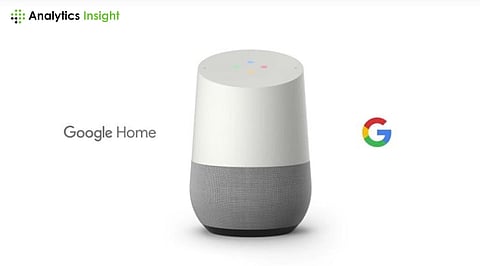

Google Home uses AI to change the way one lives at home. The brain behind the smart speaker, Google Assistant, transforms everyday errands into voice-controlled ones, making them relatively easier and less time-consuming. So, what does AI offer here? Well, step into the amazing world of AI and find out how Google Home applies it to daily life.
Google Home relies heavily on AI, especially machine learning when handling voice commands. The AI algorithms translate the voice into speech and help realize the requests and thus accurately respond to them. Models put up by Google may recognize over 1,000 commands within various languages and may get accustomed over time, thus learning from interactions and bettering understanding of accents, dialects, and context.
This technology allows Google Home's AI to identify various voices as well and give personalized answers while reminding the people in the house accordingly.
Google Home is more than just orders: It can understand complex queries, answer intelligibly, and generate meaningful responses. Indeed, Google Home can be useful in controlling all home appliances, reading out the weather, playing music from anywhere, and many more, thanks to its integration of Artificial Intelligence and NLP.
Google Assistant is a giant knowledge base. It also allows fully natural, fluid conversations with no preplanned prompts. By 2022, 41% would respond that they had employed voice assistants much more often, suggesting increasing reliance on AI-driven answers to daily tasks, quick reminders, and instant facts.
Google Home features such as smart home AI permits the integration of devices like lights, thermostats, and security cameras. The smart home AI also learns routine household activities, intending to optimize energy use by turning off the thermostat or suggesting that unused lights be turned off.
Furthermore, voice control is simplified through the grouping of actions, so various commands like "Hey Google, turn off the lights and set the thermostat to 72 degrees" can be accomplished easily. It, therefore, makes controlling daily routines efficient and eco-friendly.
Google Home AI learns not only from personal interactions but also gets better through upgrading software. The Google AI models are continuously improving, so the capabilities of Google Home are getting more intelligent and potent with each passing year.
Updates are continuous, and Google Home features are updated on all trends, new functionalities, and the progress of its general performance. That means the more people use their devices, the better they become.
The future of Google Home remains bound with AI. Improvement of AI in Google Home means improving its capacity, especially regarding machine learning and its ability to recognize voice, making it more intuitive and lifelike. As technology advances, personal interactions with it will also improve. For example, Google Assistant could respond based on an individual’s preferences, location, and mood. This creates a more tailored and intuitive user experience.
Google Home uses AI in application - and, basically, the way it changes individuals' daily lives with how people associate with their homes. From voice commands to operating smart home devices, AI empowers Google Home to make such daily life ideas convenient. Technology is getting brighter every day ahead in the future of home automation.
